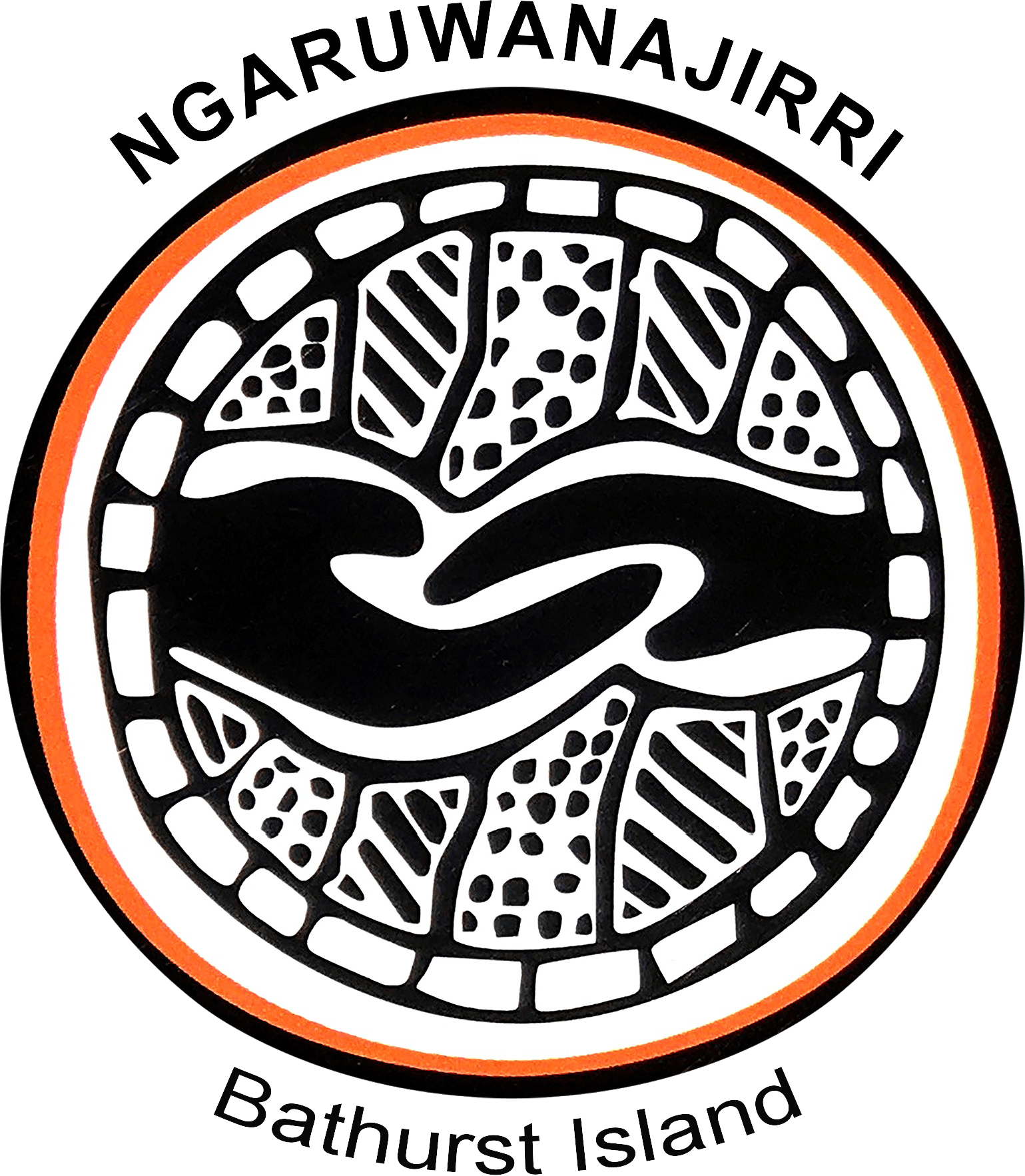Our story
Ngaruwanajirri means “Helping one another”
At Wurrumiyanga on Bathurst Island, one beautiful building known as the Tiwi Sistine Chapel or The Keeping Place houses a small group of Tiwi artists who attend daily to create artwork in a peaceful environment.
The artists are guided towards excellence in their finished artworks and are represented in State Galleries across Australia and over the world. Renowned for their use of traditional Tiwi cultural materials such as ground-up local ochre pigments, artists also work with a variety of contemporary media including wax and dyes on silk.
The art
Artists produce paintings in both ochres and watercolours. Ochres are worked on both canvas and high-quality archival papers, while watercolours are exclusively archival paper. The Ngaruwanajirri prints includes hand painted lino cuts and, more recently, etchings through an etching workshop run by master printer Basil Hall. All works relate to Tiwi
culture and arts practices including quirky wood carvings, notably Tiwi busts and Pukumani burial poles as well a variety of birds unique to the Island.
The artists
This Centre began in 1994 with funding for the support of Tiwi with a disability and the core attendants today are disability artists. They have each developed exceptional creative skill. Sometimes referred to as free, loose, naive, or Outsider art, the work of Ngaruwanajirri artists is unique. A separate group of able-bodied Tiwi carvers work alongside this core group in a purpose-built space adjacent to the Keeping Place creating both large and small
carvings.
Wurrumiyanga
Wurrumiyanga is the main town on Bathurst Island, the smaller of the two largest Islands in the Tiwi group. It is 80km north of Darwin accessible by air and is serviced also by ferry from Darwin.
Wurrumiyanga (previously called Nguiu) was the site of the first permanent non-Tiwi settlement as a Catholic mission established by Father Gsell from Alsace Lorraine in 1911. Some original mission buildings are still standing as well as the historic wooden church situated beside the beach, made from the Island’s timber, and used by Tiwi for 80 years. A history museum was established by Sister Ann Gardiner within the mission precinct and shows items of Tiwi culture and the mission in historical times.
The town has a relaxed village atmosphere in which the few roads have slowly walking families amongst the few cars as children go to and from the two schools, running and somersaulting. All over people can be heard calling out in their rhythmic Tiwi language.
